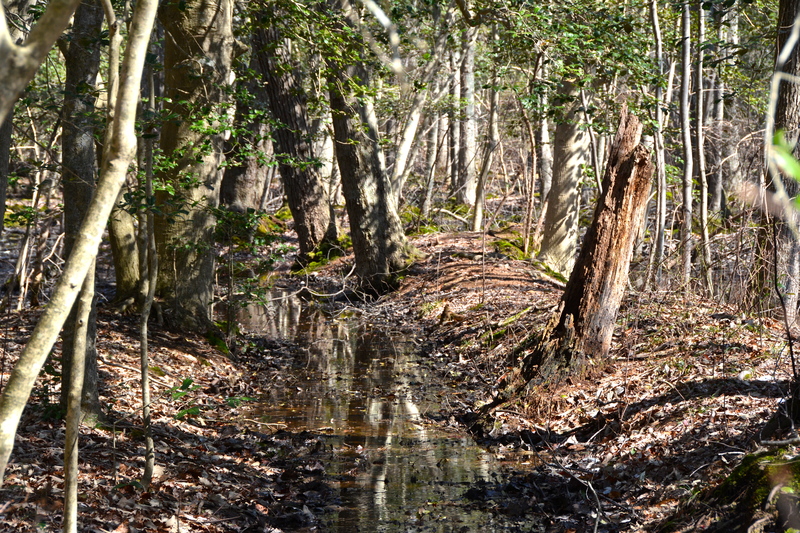Sussex County Council says leave well enough alone when it comes to a state move to regulate nontidal wetlands. It appears others agree.
On April 9, the Wetland Advisory Committee voted against recommending a state takeover of freshwater wetlands, going against a plan endorsed by Gov. Jack Markell and state environmental officials.
Department of Natural Resources and Environmental Control Secretary Colin O'Mara and Markell urged committee members to approve state, rather than federal U.S. Army Corps of Engineers management of nontidal wetlands. DNREC officials said state management would streamline the permitting process, provide better delineation of wetlands and cut down on delays. It would also offer protection to some wetlands that are not now regulated.
A majority of the committee supported the plan, but the idea failed to get a two-thirds majority. The committee did expansion of existing incentive programs to protect wetlands, such as forest preservation easements and tax credits.
County council was quick to go on record in opposition to DNREC's plan to take authority over nontidal wetlands.
Twenty-five percent of the state is covered in wetlands. Of the 320,000 acres, about 243,000 acres are non-tidal wetlands. And about 6,000 acres of those wetlands are isolated and not protected, said County Administrator Todd Lawson.
“To some there is an environmental value to these wetlands and they should be protected,” Lawson said. “Secretary O'Mara is strongly recommending giving DNREC authority to regulate these wetlands.”
Lawson said the most telling statistic to him was that only 28 acres of nontidal wetlands were lost during a 1992-2007 study period.
Council members said they have not received complaints about how the Army Corps conducts business.
“Most developers provide buffers and they work around the wetlands,” said Councilman George Cole, R-Ocean View, adding that property values around wetlands are a premium. “They get more money for lots near open space and near wetlands.”
“Our cluster ordinance has protected more wetlands that any other government regulation ever has,” said Councilman Vance Phillips, R-Laurel. “We are protecting sensitive areas by allowing cluster density.”
Councilman Sam Wilson, R-Georgetown, the most outspoken council member on the issue, said, “They are trying to take away private ownership. DNREC will step over the boundaries, and we will be controlled.”
Lawson said the committee was looking for comments from council on an incentive-based program to protect wetlands. “Incentives are built into our code; we already have them,” Cole said.
He said that county officials should be the ones to determine what protections are necessary in their respective jurisdictions.
“We need to protect wetlands, and I would not rule out regulations, although I would prefer incentives,” said Councilwoman Joan Deaver, D-Rehoboth Beach.
Lewes resident Henry Glowiak, vice president of the Inland Bays Foundation, disagreed with council; he said DNREC should be given authority over nontidal wetlands. “I think they should be regulated and not developed,” he said.
He has proof of what can happen when these types of wetlands are not protected. Several acres within his community off Beaver Dam Road are wetlands where runoff collects; some of the lots within those acres are for sale.
“If you stepped out there right now, you would sink in mud up to your knees,” he said.
Glowiak said one landowner tried to build on one of the lots. After clear-cutting the lot of trees and bringing in tons of fill dirt, there were still drainage issues. In fact, remnants of a foundation for a house remain on the lot.
“The foundation filled with water like a swimming pool,” Glowiak said. “Right now, the lot has been abandoned.”
Wetlands can be a sensitive subject
Discussing wetlands can be a sensitive subject. An April 1 discussion about the Wetland Advisory Committee grew heated, when Councilman Vance Phillips, R-Laurel, questioned Center for the Inland Bays Executive Director Chris Bason.
Bason said the watershed lost 1,000 acres of natural wetlands from 1992 to 2007. “Our area has a real problem of losing wetlands. We are supportive of incentive-based programs and regulatory programs to help protect wetlands because we have a long way to go to restore the water quality of the Inland Bays that continue to be some of the most polluted waters in the region.”
Phillips took immediate exception to his comment.
“You say the bays are so polluted, yet I have read many times they are improving,” he said, adding the county has taken 60,000 private septic systems off line as residents hook into central systems.
He said farmers are taking part in nutrient management that was unheard of 15 years ago. “And we are doing things in our development process unheard of 20 years ago,” he said.
“We have got to be careful about categorizing these bays as you just did – they are not toxic and I would challenge you to present hard facts. Let me see some statistics before you use those broad-brush scare tactics.”
Bason said the hard facts are in the State of the Bays report that he wrote in 2011. “I don't want to belittle what we've done because we have made a lot of progress in cleaning up the bays, and the county has been part of that,” Bason said. “But the fact is we still have conditions where the water is not clear, and we have low dissolved-oxygen conditions, and we have a long way to clean them up.”
Phillips said the pressure on the ecosystem of the Inland Bays is too much with just one inlet to the ocean, hinting that three or four more inlets would help the Inland Bays flush better.
“I think you are misunderstanding me,” Bason said to Phillips. “I'm saying the bays are very polluted and we have a long way to go to fix the problem.”
He added that the pollution control strategy is a blueprint that details all that is necessary to comply with the Clean Water Act and clean up the bays.
Bason said there is no doubt scientists are starting to see decreased levels of nitrogen going into the bays. “There are a lot of good indicators out there, but there are also a lot of indicators out there that say we have a long way to go,” he said.
Phillips said he had to drag that comment out of Bason. “The bays are getting cleaner and healthier in many categories,” Phillips said.
The discourse prompted Councilwoman Joan Deaver, D-Rehoboth Beach, to say she supported the efforts of the Center for the Inland Bays. “The next time they come here, I hope we are little more polite,” she said.


























































